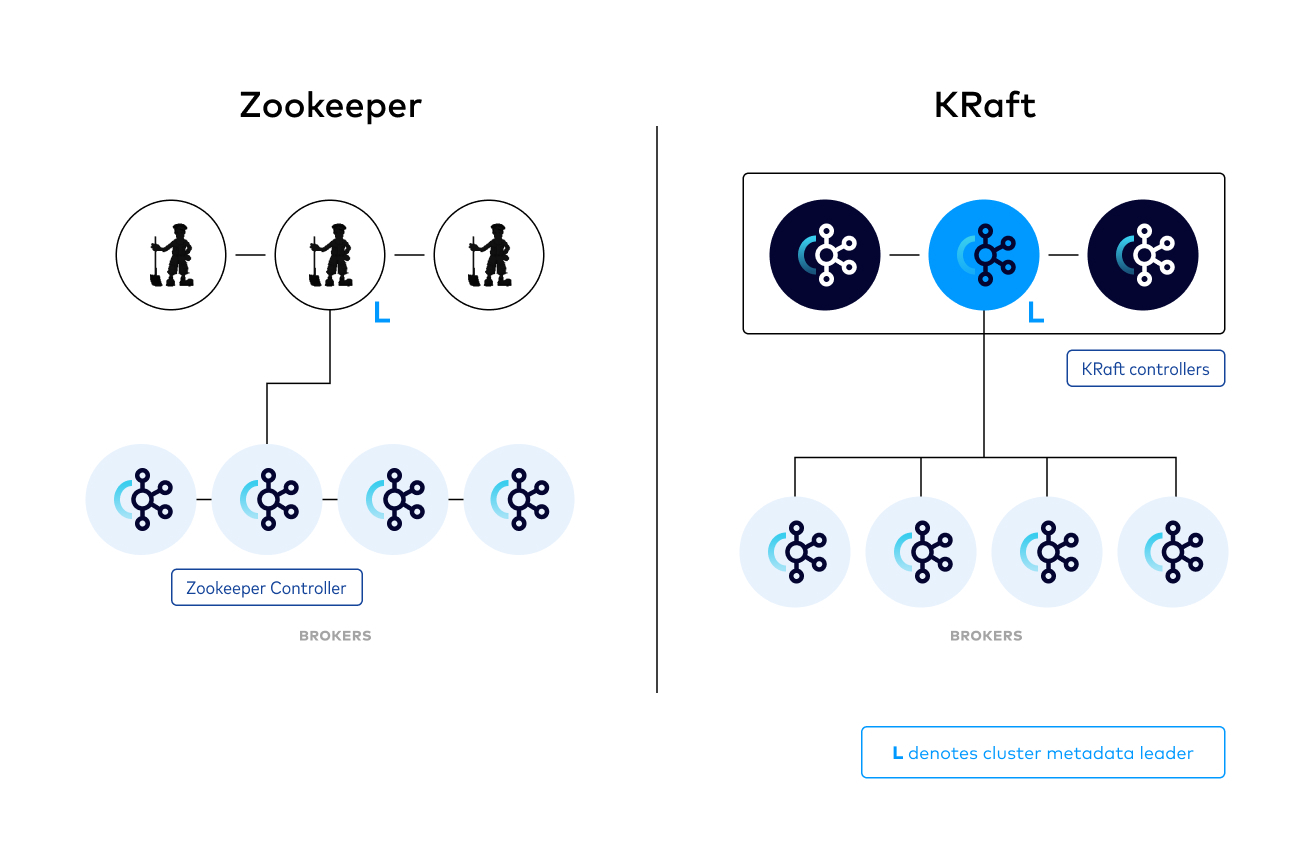
Zookeeper and Kafka are two different systems - Complexity
Apache zookeeper Server Application for Coordinating Distributed Systems
- Example: Metadata management
- FileSystem API: On top of a log data structure
Apache Kafka for a Distributed Event-Streaming Platform
- Pub/Sub API: Based on event-driven consensus on top of a log data structure
Complexity for Kafka Admins
- Two Different Systems to Manage
- Configuration
- Security
- Monitoring
- Networking
- Performance Optimization Methods: Different for each system
- Kafka Viewed as Heavyweight Infrastructure
- Not a single-process deployment due to additional Kafka deployments
- Considered primarily for scale
- Startups may prefer simpler systems like RabbitMQ
External Metadata Management and Scalability in Kafka
-
What is Scalability in Kafka?
- Scalability refers to Kafka’s ability to add more partitions to support additional topics and data.
-
Impact of External Metadata Management (via Zookeeper) on Scalability:
- Time for operations involving metadata movement between Zookeeper and the Kafka Controller increases with the number of partitions (O(#partitions)).
-
Key Operations Affected:
- Controlled Shutdown (CS)
- Uncontrolled Shutdown & Recovery (USR)
- Controller Failover & Recovery (CFR)
-
Effects of Increased Partitions:
- Increased Metadata: More metadata about partitions is generated.
- Increased Data Movement: More data needs to be transferred between Zookeeper and the Controller.
- Increased Operation Time: More time is required for the above operations.
-
Performance Impact:
- The performance of the Kafka cluster can be negatively affected by the increased time required for metadata operations.
-
Divergent Views:
- Metadata views may become inconsistent between Zookeeper, the Controller, and Brokers.